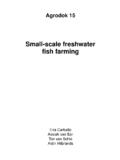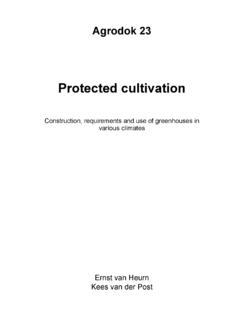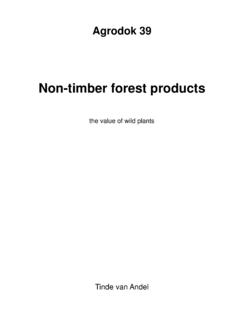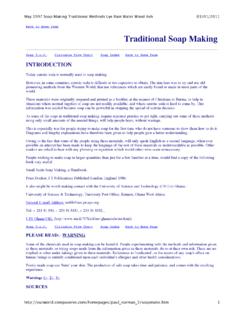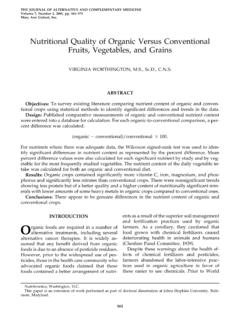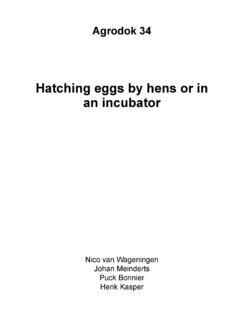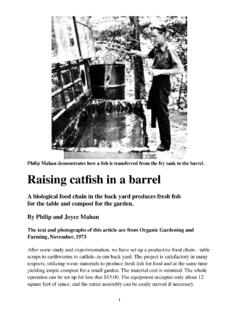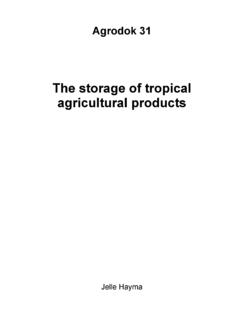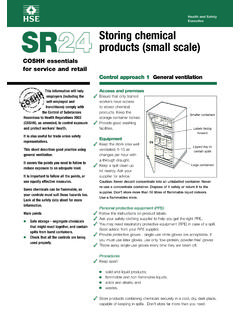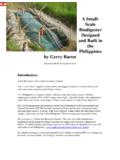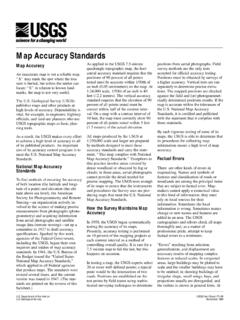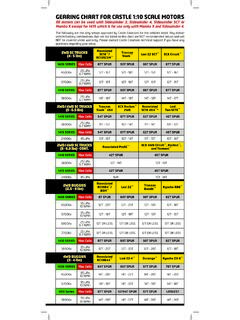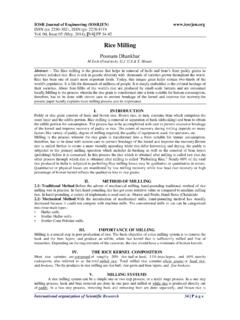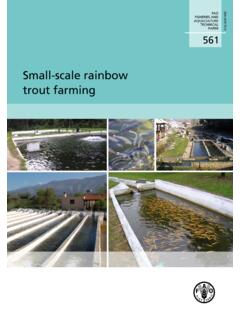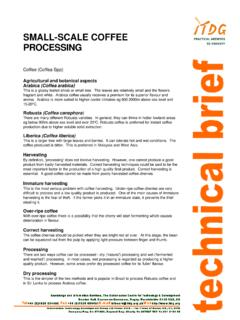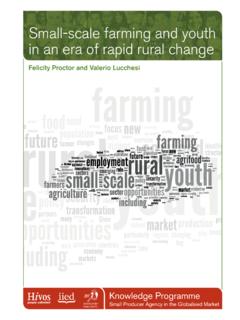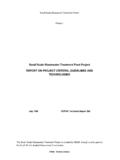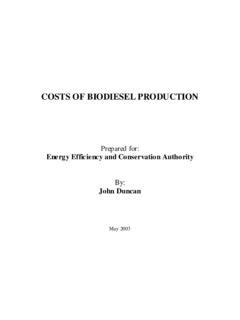Transcription of Small-scale mushroom cultivation - Journey to Forever
1 Agrodok 40 Small-scale mushroom cultivation oyster, shiitake and wood ear mushroomsPeter Oei with contributions by Bram van Nieuwenhuijzen 2005 Agromisa Foundation and CTA All rights reserved. No part of this book may be reproduced in any form, by print, photocopy, microfilm or any other means, without written permission from the publisher. First edition: 2005 Authors: Peter Oei, with contributions by Bram van Nieuwenhuijzen Editor: Janna de Feijter Illustrators: Barbera Oranje, Mamadi B. Jabbi Design: Eva Kok Translation: Ninette de Zylva Printed by: Digigrafi, Wageningen, The Netherlands ISBN Agromisa: 90-8573-038-4 ISBN CTA: 92-9081-303-2 Foreword 3 ForewordMushroom cultivation fits in very well with sustainable farming and has several advantages: ?
2 It uses agricultural waste products ? A high production per surface area can be obtained ? After picking, the spent substrate is still a good soil conditioner This Agrodok contains detailed information on how to grow three kinds of mushrooms : oyster, shiitake and wood ear mushrooms . These mushrooms are rather easy to grow on a small scale . cultivation of the common white button mushroom and of the rice straw mushroom is very different and will therefore be dealt with in another Agrodok. Much of the information presented here is from my book mushroom cultivation and appropriate technologies for commercial mushroom growers.
3 By concentrating on three mushroom species only and on relatively simple technologies, I hope readers can obtain a sustainable profit from mushroom growing. Bram van Nieuwenhuijzen was the director of the mushroom Grow-ers Training Centre (nowadays known as C Point) at Horst, The Neth-erlands, for a number of years. He is currently involved in mushroom cultivation projects in several countries as an adviser through PUM Netherlands Senior Experts in The Hague. Peter Oei Chairman ECO Consult Foundation and Visiting Professor Fujian Ag-ricultural University Small-scale mushroom cultivation 4 Contents1 Introduction 6 2 Biology of mushrooms 8 Fungi 8 Fungus ecology 8 Life cycle of fungi 9 Temperature ranges of cultivated mushrooms 12 3 mushroom farms 14 Farm layout 14 Farm hygiene 17 4 Spawn production 18 The starter culture 20 The sterilisation process 20 Clean environments 22 Cultures
4 24 Preparation of media 27 Preparation of slants 28 Mother spawn 32 Preparation of the final spawn 34 5 Growing oyster mushrooms on pasteurised or sterilised substrates 37 Preparation of the substrate 37 Heat treatments 40 Spawning pasteurized substrate 44 Spawning sterilised bags 44 Spawn run 47 Fruiting/cropping 48 Harvesting 50 Case description: Ahmedabad, India 51 Case description.
5 Bogor, Indonesia 54 Contents Juncao Technology turns grass into mushrooms 56 6 Shiitake cultivation on plastic bags 58 Substrate preparation 58 Filling and heat treatment 59 Spawning 59 Spawn run and mycelial development 60 Fruiting 61 Harvesting 63 Pests and diseases 63 7 Wood
6 Ear mushrooms on sterilised substrate 65 Substrate preparation 65 Heat treatment 65 Spawning and spawn run 65 Fruiting 66 Case description: the Philippines 66 8 Post harvest handling 69 Fresh Market 70 Drying 71 Appendix 1: Formulas 76 Appendix 2: Substrate preparation 77 Further reading 78 Useful addresses 81 Glossary 83 Small-scale mushroom cultivation 6 1 IntroductionDo you want to grow mushrooms ?
7 There are plenty of reasons to do so. mushrooms are a good cash crop; they are rather easy to grow and are brimming with protein, B vitamins and minerals. They even have medicinal properties. Time between spawning and harvesting can be as short as three weeks. Furthermore, after the cultivation , you can still use the substrate as a good soil conditioner. This Agrodok gives you detailed information on the cultivation of oys-ter, shiitake and wood ear mushrooms . Although many other types of mushrooms can be grown, we have chosen the ones that can easily be cultivated in developing countries using appropriate technology.
8 When choosing your method to grow mushrooms , you have to find an answer to the following questions: 1 Which of the mushrooms do you want to grow? Check the market and the temperature ranges for fruiting (see paragraph ). 2 Can you obtain mushroom spawn (the seed ) of the species you want to grow? Chapter 4 shows you how to produce your own spawn. If you cannot obtain or produce spawn it will not be possible to grow mushrooms . 3 What kind of substrate would you need to be able to grow the de-sired mushrooms ? See Chapter 5. 4 How should you treat the substrate?
9 This affects the investments you have to make. Details can be found in the chapters on the spe-cific mushroom species. To understand mushroom growing and the properties of mushrooms , some biological knowledge of the crop is necessary. So, we will start with the biology of mushrooms . Introduction 7 Figure 1: The three mushroom species dealt with in this Agrodok Small-scale mushroom cultivation 8 2 Biology of mushrooms Fungi mushrooms belong to the kingdom of Fungi, a group very distinct from plants, animals and bacteria.
10 Fungi lack the most important fea-ture of plants: the ability to use energy from the sun directly through chlorophyll. Thus, fungi depend on other organisms for food, absorb-ing nutrients from the organic material in which they live. The living body of the fungus is mycelium made out of a tiny web of threads (or filaments) called hyphae. Under specific conditions, sexually com-patible hyphae will fuse and start to form spores. The larger spore-producing structures (bigger than about 1 mm) are called mushrooms . In nature this is the most striking part of the organism, but in fact it is just the fruiting body and the major part of the living organism is found under the ground or inside the wood.
